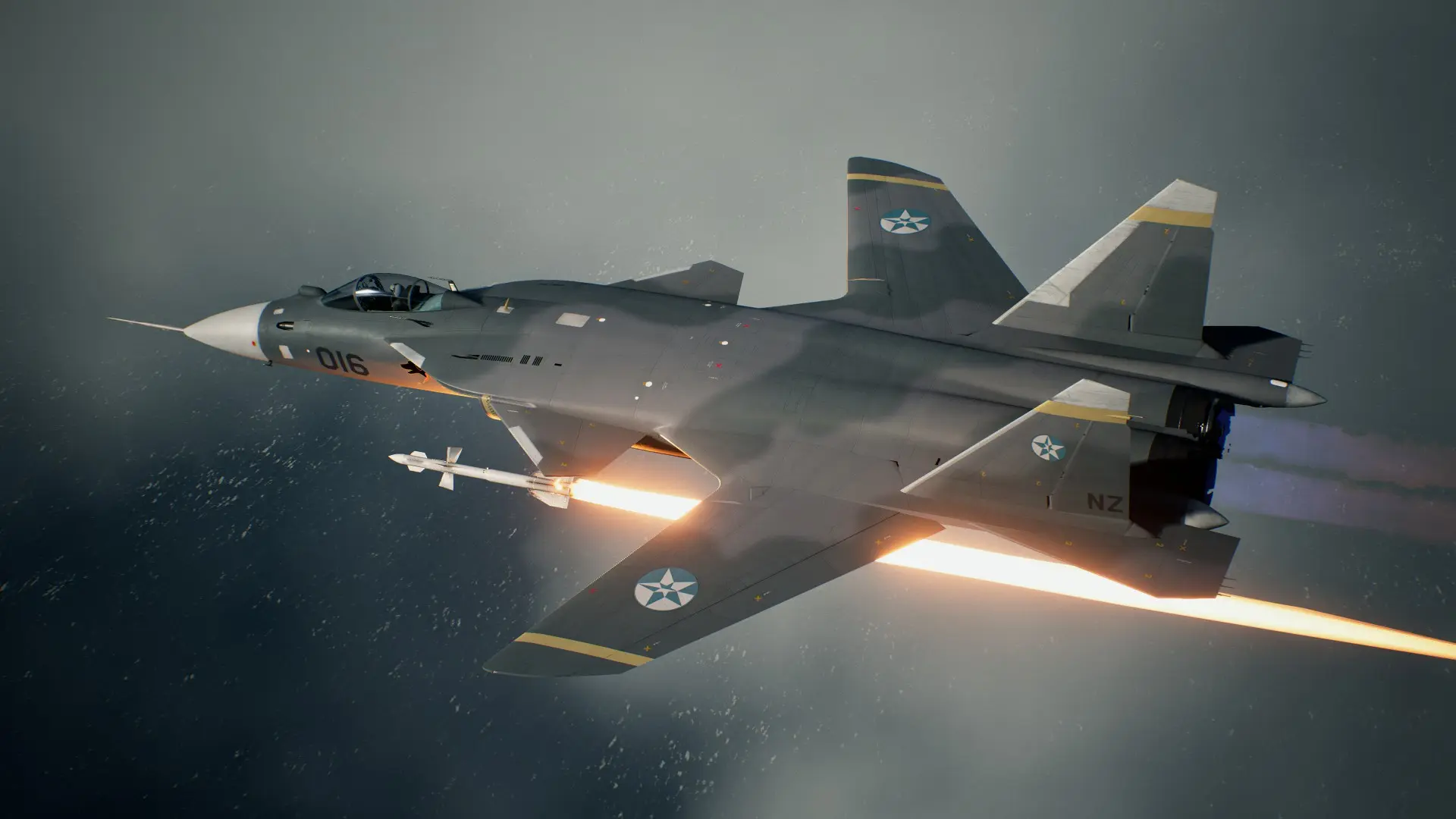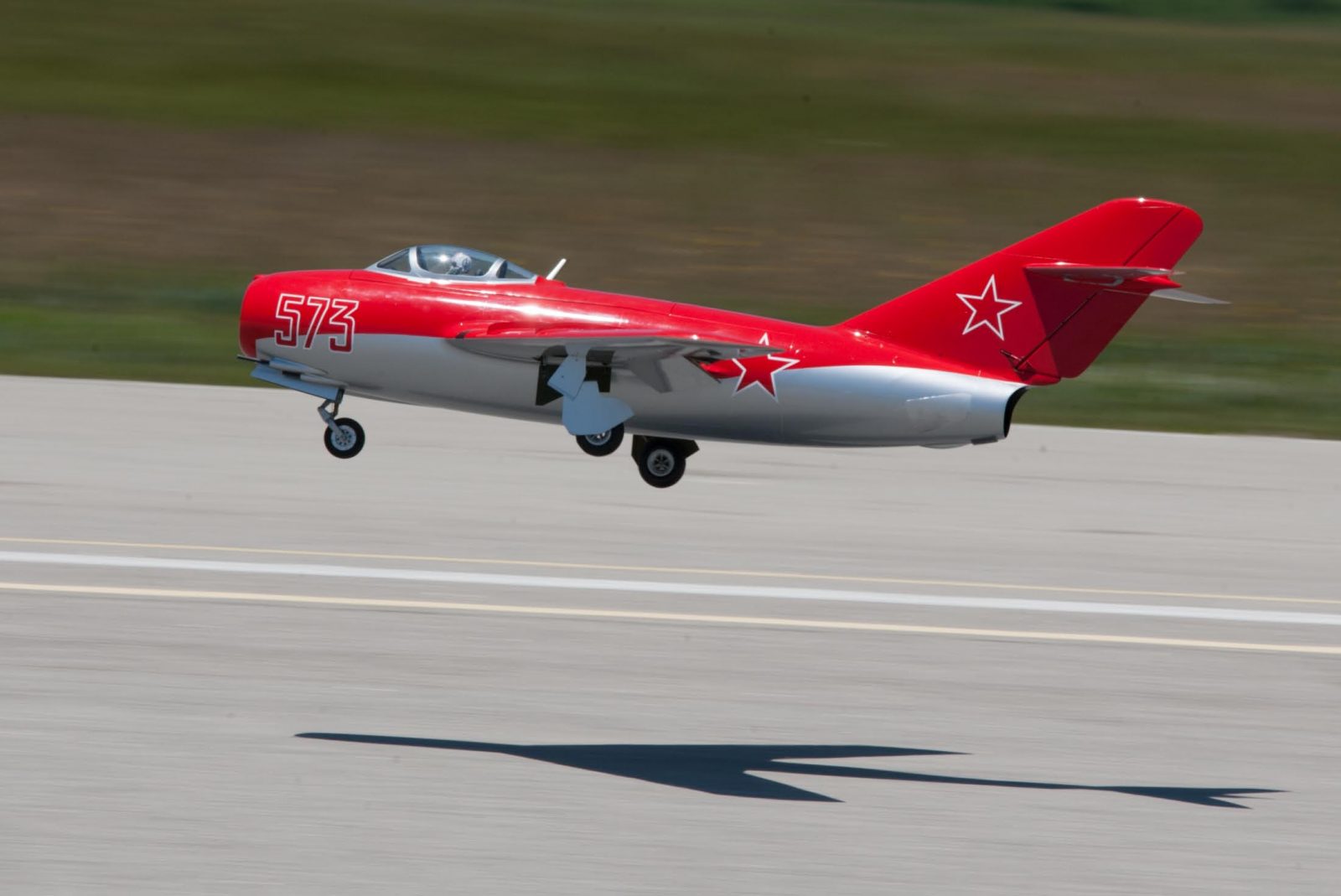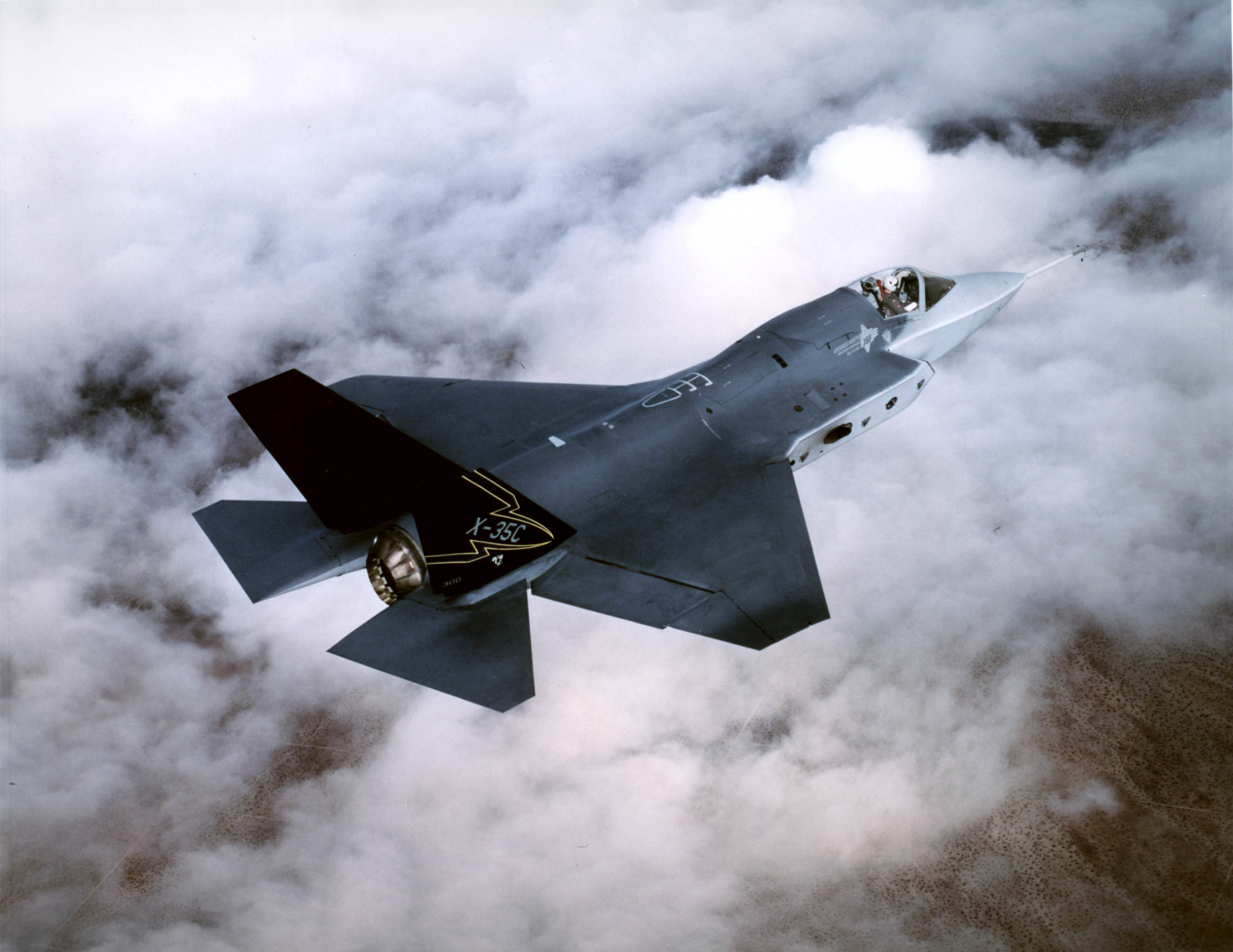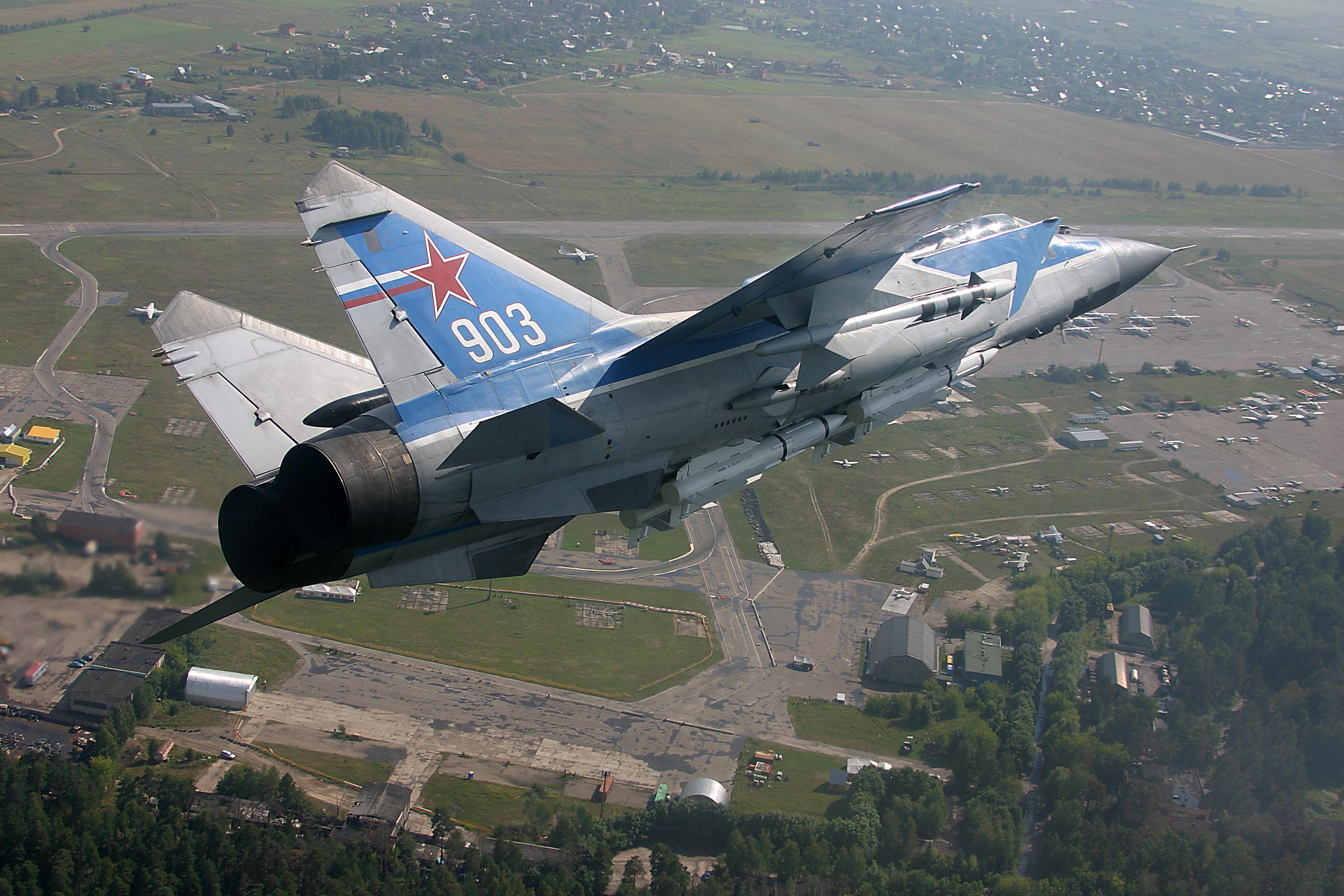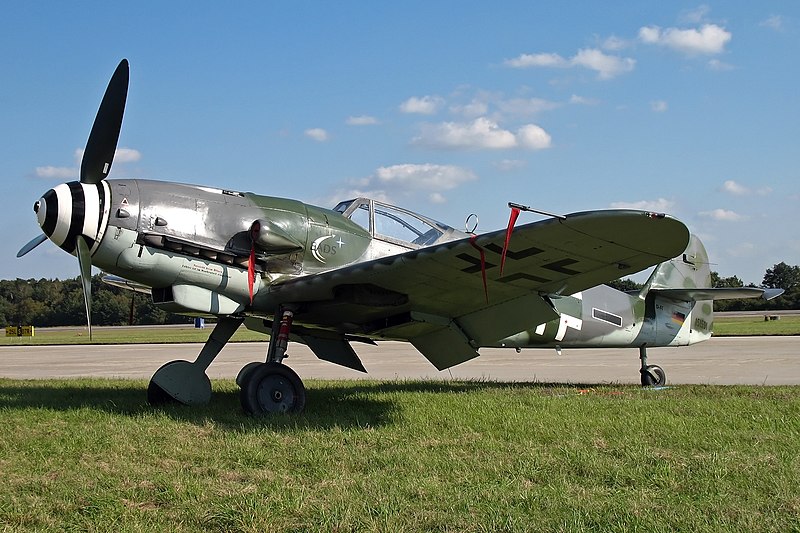The Ultimate List: Top 14 Fighter Planes and Jets of All Time
In the 100+ years of aviation history, aircraft have evolved with great speed as both militaries and private industry produce increasingly advanced and impressive engineering. Almost from the beginning, military leaders saw the potential to use aircraft to bolster a country’s strength by augmenting ground forces with aerial weapons. That potential soon gave rise to the fighter plane. While the earliest military airplanes were only used for reconnaissance purposes, it was not long before armies found ways to arm them with machine guns and bombs. This triggered the beginnings of aerial combat, indelibly changing war forever.
The fighter jets of the modern age are marvels of engineering and the merging of science and technology. They have become symbols of a nation’s strength and objects of wonder to millions worldwide. Produced only in countries with the most advanced economies and the manufacturing base capable of such sophisticated production, the range of fighter jets and planes is quite impressive. Bearing in mind the continuous advancements of all the craft engaged in defense and countless armed conflicts over the years, here are 14 of the best.
Grumman F6F Hellcat
WWII put on display the mechanical might of the world’s greatest militaries. The American effort contributed dozens of models of aircraft and thousands of individual units to the fight, but chief among the fighters was the Grumman F6F Hellcat.
In just 18 months, the Hellcat went from an idea to operational aircraft and was ready to enter into service by 1943. It was a carrier-based plane flown by a single pilot and propelled by a 2,000-horsepower Pratt and Whitney “Double Wasp” engine. The engine was an 18-cylinder air-cooled radial design with 45.9 liters fed by a Stromberg pressure carburetor and supercharger. It quickly became the Navy’s primary front-line fighter and saw significant battles over the Pacific. The Hellcat boasts of the destruction of 5,203 Japanese aircraft while losing only 270 of the 12,275 total Hellcats built. It was also known for being the plane to produce the most “Ace” pilots, who were the most skilled and decorated dogfighters of the war.
The Navy accounts for up to 75% of aerial victories attributed to the Hellcat. Its maximum speed of 376 mph, along with excellent aerial maneuvering ability and a pair of .50 caliber cannons, made it a formidable foe and helped to ensure the defeat of fascism, authoritarianism, and tyranny. It is also fitting as the inspiration for one of the most powerful production American cars ever built, the Dodge Hellcat.
Supermarine Spitfire
While the United States only entered WWII after the attack on Pearl Harbor, the British had been resisting the Germans since 1939. However, before the Battle of Britain commenced, the aircraft that would become the most renowned among British warplanes was already under construction. This was the Supermarine Spitfire, which was introduced into service in 1938.
In contrast to the radial engines used in the American Hellcat, the Spitfire is propelled by a Rolls-Royce V12 Merlin engine. In the early versions of this aircraft, the Merlin generated 1,175 horsepower, but this would be escalated to over 2,000 by the war’s conclusion. While the design of the Spitfire is visually striking, its essence lies in flying, and the Spitfire is an adept flier with exceptional maneuverability that posed formidable competition against the incoming German fighters over the English Channel. The distinctive semi-elliptical wings were a significant feature that enabled a slender build and efficient aerodynamics.
Without the Spitfire, the British might not have been capable of defending the island, as RAF fighters in these planes were pivotal in preventing German intrusion into their territory. Throughout production, designs were refined to enhance the aircraft, and by war’s end, they were armed with up to eight machine guns carrying 300 rounds each. Few airplanes symbolize British determination as profoundly as the Spitfire, and a compelling contemporary portrayal of this can be witnessed in Christopher Nolan’s film “Dunkirk,” in which authentic WWII Spitfires were employed in filming.
Mikoyan MiG-15
The MiG-15 stands out as the pioneering production jet fighter, marking a significant milestone in aviation history. This sleek aircraft posed a formidable challenge to its American counterparts of that era. Designed as a high-altitude interceptor with a swept-wing configuration and powered by a single turbojet engine, the MiG-15’s development was initiated promptly after World War II on the directives of Joseph Stalin. The key impetus came from the acquisition of British-made jet engines from Rolls-Royce. These engines were reverse-engineered and adapted to the new aircraft, which made its debut in active service in 1948.
The Soviet MiG-15 proved to be a valuable asset for the Soviet Union, with over 12,000 units manufactured. Many of these aircraft were exported to various countries around the globe. The MiG-15’s combat debut occurred in 1950 over the skies of Korea. This development put American forces on high alert, as the existing piston-engined planes were utterly outmatched in terms of speed and agility. American aircraft had been effectively driven out of the region early in the conflict. Only after the rapid production of the F-86 Sabre did the situation start to shift in favor of the American forces on the peninsula.
In head-to-head encounters between the MiG-15 and the F-86 Sabre, the Communist aircraft enjoyed an advantage in terms of faster climb rates and an ability to reach altitudes up to 5,000 feet higher than the American counterpart. However, at lower altitudes, the MiG-15’s maneuverability was relatively compromised. Additionally, American pilots were equipped with anti-G suits that prevented blackouts during high-G maneuvers, a feature lacking among Soviet pilots. Despite its historical significance, some disarmed MiG-15 units can still be occasionally found in private ownership today.
The F-35 Joint Strike Fighter
The F-35 Joint Strike Fighter stands as an unrivaled champion of the skies. Conceived from a program initiated by the Department of Defense to develop a new aircraft, replacing the aging F-16 Fighting Falcon in the late 1990s, the F-35’s origins trace back to a design proposal by Lockheed Martin. The resultant undertaking would become one of the most financially demanding aviation programs ever executed, yielding the most sophisticated fighter jet ever constructed.
Various iterations of the F-35 have been crafted, including a Navy variant featuring a mid-mounted fan for vertical takeoffs and landings, eliminating the need for traditional runways. This stealth fighter combines a skillfully engineered airframe that minimizes radar reflection, coupled with a radar-absorbing coating. This stealth technology renders the 29,000-pound supersonic jet almost as inconspicuous as a golf ball to radar detection. This effect is also achieved by housing its missile payload within an internal compartment in the aircraft’s belly. For comparison, the most advanced fighter jet in the Russian arsenal, the Su-57, possesses a radar signature about half the size of the F-35’s.
Beyond its arsenal and flight capabilities, the F-35 distinguishes itself through its comprehensive array of electronic warfare and communication systems. Its advanced radar and electro-optical targeting systems are complemented by its capacity to function as a mobile communication hub, facilitating real-time data exchange with naval vessels and other aircraft during missions.
F-16 Fighting Falcon
Since its introduction into service in 1977, the General Dynamics F-16 Fighting Falcon has epitomized the cutting-edge of supersonic fighter jets in the American military. While it has been surpassed by more technologically advanced aircraft, the F-16 remains a valuable asset in active service today.
The F-16 was originally developed in 1972 as a lightweight fighter intended to establish air superiority. It is a single-engine multi-role tactical fighter that is relatively compact and lightweight compared to other supersonic jet fighters. It pioneered the use of fly-by-wire technology, and despite its production commencing in the 1970s, its avionics and weapons systems were and continue to be state-of-the-art. Due to its small stature and electronic flight controls, it boasts remarkable agility, capable of reaching speeds exceeding Mach 2 and executing 9-G maneuvers. Armaments include an M61 Vulcan cannon, with nine hardpoints from which a variety of missiles and bombs can be deployed.
Despite the first prototypes rolling off the assembly line five decades ago, the F-16 continues to be manufactured today. Lockheed Martin produces it in South Carolina, and production facilities in locations such as The Netherlands and Turkey have contributed to its manufacture as well. Furthermore, it enjoys widespread usage by American allies, with various versions serving in the militaries of countries like South Korea, Bahrain, Japan, and several others.
F-22 Raptor
In the early 1980s, the search for a successor to the F-15 led to the initiation of a program aimed at developing the next generation of fighter jets. This endeavor began in 1986 and marked the birth of the F-22 Raptor. Leveraging insights gained from the F-117 and B-2 Spirit stealth aircraft, Lockheed Martin succeeded in crafting a fighter with a more conventional appearance, yet possessing an astonishingly low radar signature comparable to that of a bumblebee. Ultimately, this program resulted in the production of 195 aircraft, which would go on to establish themselves as some of the most exceptional air-to-air combat jets ever manufactured, maintaining their reputation as the premier dogfighting planes within the American fleet.
Equipped with a 20mm cannon and three weapons bays capable of housing infrared air-to-air missiles, radar-guided missiles, and 1,000-pound JDAMs, this $143 million aircraft stands as an imposing adversary. The twin Pratt & Whitney turbofan engines provide formidable thrust, further enhanced by their torque-vectoring nozzles that confer exceptional agility. Adding to the F-22’s prowess is its Super cruise capability, enabling sustained speeds exceeding Mach 1.5 without the need for afterburners, thus significantly conserving fuel and extending operational range. Notably, the F-22 was the pioneer American fighter jet engineered with this feature and remains the sole aircraft in its fleet possessing such capability.
The electronic systems of the F-22 encompass a wireless data link facilitating the transmission of operational data to other aircraft within a formation, bypassing the need for radio communication. The cockpit incorporates advanced screens, heads-up displays, and night vision goggles, further elevating the aircraft’s superiority as a cutting-edge fighter.
The F-22 Raptor stands as a testament to modern engineering, combining innovation in stealth technology, agility, and electronic integration to create a multifaceted fighter aircraft that continues to excel in its role within the American military fleet.
Spad XIII
World War I marked the first instance of airplanes playing a significant role in armed conflict. Despite being a technology only slightly more than a decade old, aviation became a pivotal factor for both warring factions. The biplane emerged as the most prevalent aircraft design during this period, and among France’s exceptional models was the Spad XIII.
By the war’s culmination in 1918, France had manufactured 8,472 units of this aircraft. Propelled by a Hispano-Suiza water-cooled V8 engine with up to 235 horsepower, the Spad XIII was a robust machine that proved highly effective in the hands of numerous courageous pilots, helping solidify the importance of aviation in warfare. Armed with two Vickers .303 machine guns and capable of reaching a top speed of 135 mph – remarkably fast for its time – the Spad XIII boasted a service ceiling of 21,185 feet, providing a strategic advantage. This model played a crucial role in producing many “Aces,” including American Ace Eddie Rickenbacker, who achieved 26 victories while flying a Spad.
As France’s primary fighter aircraft, the Spad XIII not only served the Allies but also became the go-to choice for the U.S. Army Air Service when the United States entered the conflict. At that point, lacking a ready-made fighter plane, the U.S. turned to the Spad XIII. Although aircraft design has evolved dramatically over the past century, all subsequent developments in aviation can trace their lineage back to this groundbreaking model.
F/A-18 Super Hornet
The Navy’s primary strike and air superiority carrier-based aircraft is currently the F/A-18 Super Hornet, an updated airframe of the F/A-18 Hornet that joined the fleet in 1984. Congress chose to upgrade an existing design rather than build something from scratch, resulting in an airframe that is 20% larger and equipped with the latest avionics, targeting, and communication systems. It is a fast and agile supersonic aircraft with a top speed of Mach 1.7 and a range of 1,275 miles. With a dozen hardpoints and configurations to carry up to 27 different weapons or additional fuel tanks, the Super Hornet is a fearsome machine. Reusing an existing design meant it could not be a stealth aircraft, but designers incorporated stealth technology in as many ways as possible, leading to a significantly reduced frontal radar cross-section.
The greatest benefit of having this jet in the Navy’s fleet comes down to cost. Compared to the F-14 Tomcat, also operated by the Navy, the Super Hornet reduces cost per flight hour by 40%, and the labor requirement per flight hour is also reduced by up to 75% – figures that are remarkable and almost unheard of in the Navy. To see one of these planes in action, the best way is to catch a show featuring the Blue Angels, a team of ace pilots with a squadron of Super Hornets in distinctive blue livery who perform aerobatic maneuvers at air shows. It is worth a drive.
Sukhoi Su-27
Introduced in 1985, the Sukhoi Su-27 stands as one of the final fighter jets constructed by the Soviet Union, despite its continued operational use today. This sophisticated aircraft boasts a frame crafted from titanium and high-strength aluminum, complemented by dual turbofan engines propelling it to a maximum speed of Mach 2 and enabling flights at altitudes of up to 62,000 feet.
Initially conceived as a response to the American F-15, the Su-27 emerged during a period when Soviet aviation technology of the ’70s and ’80s was notably advanced. The Su-27 incorporates numerous cutting-edge innovations that have seen consistent upgrades throughout the years. Its armaments include a 30mm gun and 10 hardpoints for missiles and other munitions. Within the cockpit, the pilot utilizes an infrared tracking system, laser rangefinder, and helmet-mounted targeting equipment. Despite its vintage construction under a now-defunct government, the Su-27 remains a pertinent fighter, actively engaged in present-day conflicts.
One distinctive aspect of the Su-27 is its usage on opposing sides of a conflict, an occurrence rare in modern times. As both Ukraine and Russia emerged as successor states to the former Soviet Union, they inherited fleets of Su-27 fighters. While Ukraine’s inventory is relatively limited, the country has undertaken modifications and enhancements to systems such as navigation and radar to maintain these aircraft at the highest attainable standards.
Eurofighter Typhoon
The Eurofighter Typhoon, a renowned aircraft in current service for multiple European countries, boasts a distinct development history unlike any originating from the United States or the Soviet Union. Emergence of this advanced fighter jet traces back to the late ’70s when defense ministries from various European military powers united with the aim of creating a cutting-edge aircraft. This collaboration aimed to curtail costs and streamline production while countering the Soviet threat of the time.
The result of this cooperative effort is a 4.5-generation multi-role supersonic jet fighter. Capable of ascending to 55,000 feet and achieving a maximum speed of Mach 1.8, the Typhoon carries an arsenal of weapons on its 13 hardpoints. Its airframe showcases a delta-wing design with canards positioned near the cockpit to enhance stability. Propelled by twin turbofan engines, piloted using fly-by-wire technology, the Typhoon stands as one of the most proficient jets in active service. While not a stealth fighter per se, it incorporates numerous stealth properties to diminish its radar signature, including the concealment of engine intake vents.
Initially, the United Kingdom, Germany, and Italy initiated this project, with Spain joining later. Prototype test flights commenced in 1994, and production aircraft were introduced into service in Germany by 2003. The extended development timeline—spanning over 20 years—resulted from the collaboration of various bureaucracies and competing defense contractors vying for contracts. Just over 700 units were constructed, primarily allocated to the partner countries, while export units found buyers in Austria and Saudi Arabia.
Mikoyan MiG-31
First introduced into service in 1982, the MiG-31 continues to be one of the most powerful and capable jets in the Russian Air Force. It boasts an incredibly high service ceiling of 67,000 feet and a top speed of nearly Mach 2.5. Originally designed as an interceptor, its main purpose was to engage reconnaissance aircraft operating at high altitudes and speeds, such as the SR-71.
Upon its introduction, the MiG-31 became the pioneer in fighter jets equipped with a phased-array radar system capable of detecting up to 10 targets and engaging with four of them simultaneously. While armed with a 27mm autocannon, its primary function lies in tracking and neutralizing targets through a variety of air-to-air missile options. In 2011, Russia upgraded this aircraft to the MiG-31BM model, extending its operational lifespan through 2030. The enhanced radar system can now detect up to 24 targets within a range of 320km, with the ability to engage eight of them simultaneously.
Undoubtedly, this aircraft remains one of the fastest and highest-flying in active service today. On paper, it stands as a highly competitive and proficient counterpart to its Western equivalents. However, it’s worth noting that while its initial purchase cost is lower compared to Western aircraft, Soviet and Russian planes are renowned for their high maintenance expenses, which can make them equally, if not more, expensive over the course of their operational lives.
Saab JAS 39 Gripen
Although Saab is well-known for its automobiles, its history with aircraft is much longer. As the main supplier to Sweden’s Air Force, Saab has produced several fighter planes and jets over the years, and its most current, modern, and advanced model is the JAS 39 Gripen.
The Gripen is a light single-engine multi-role fighter that uses a delta-wing configuration with forward adjustable canards for added stability and agility. Like other fourth-generation fighters, it uses fly-by-wire technology and is equipped with highly advanced electronic avionics. It was built to be small and adaptable, able to take off from extremely short runways. The Gripen also has one of the lowest operating costs of fourth-generation fighters, and despite its smaller size, its capabilities are not diminished whatsoever. The Gripen has a top speed of Mach 2 but can also cruise at Mach 1.2 in supercruise mode without afterburner, making it one of the fastest and most efficient jets from a European manufacturer.
While Sweden has historically taken an officially neutral stance politically, its military has participated in NATO exercises where the Gripen has shown to be a superior dogfighter capable of taking out Eurofighter Typhoons and F-16s in large numbers. Although it is not a stealth fighter of the latest generation, it is one any skilled pilot would not want to face in battle.
Mitsubishi A6M Zero
During the initial phase of the Pacific Theater in World War II, the Mitsubishi Zero struck fear into the hearts of Allied pilots due to its exceptional speed and range. Allied pilots often found themselves outmatched when facing Zeros.
The Mitsubishi Zero held a significant advantage over Allied aircraft in the Pacific, primarily stemming from its impressive climb rate and unmatched speed. It could outclimb and outrun most other planes of the time. Adding to its capabilities, Zeros could take off from carriers at remarkable distances and still have the range to return. Despite the concerted efforts by the Americans to capture a Zero for study, the Japanese thwarted these attempts, ensuring the prized plane remained elusive. However, a crashed Zero was eventually discovered, revealing its lack of armor, reduced agility at speeds exceeding 200 knots, and its tendency to stall during dives.
Once the Allies identified these vulnerabilities, their engagement tactics changed. Pilots being pursued by a Zero learned to initiate a vertical dive, exploiting the enemy plane’s tendency to stall. Swiftly rolling to the right, they could position themselves for a shot before the Zero pilot could restart the engine. Furthermore, due to its light armor, the Zero was susceptible to being shot down with a single well-placed hit. The once-dominant Zero quickly became obsolete, catching the Japanese off guard, and leaving them with no opportunity to make improvements before the war’s conclusion.
Messerschmitt Bf 109
After World War I, Germany was severely limited in its ability to produce military hardware, including aircraft. Yet, Hitler had grand plans and chose to ignore all restrictions, kickstarting the aviation industry by churning out warplanes by the dozen. One of the designs to come from this plan was the Messerschmitt Bf 109, which would become a dominant fighter throughout the next war.
When the Battle of Britain began, RAF pilots found themselves outmatched in many ways by the Bf 109. Its fuel-injected Daimler-Benz V12 engine with 1,000 horsepower gave the 109 a top speed of 350 mph and a service ceiling of 36,000 feet. Fuel injection gave it an advantage over the Spitfire as it meant the engine would continue running through negative G operations. However, Spitfire pilots found that in chasing a 109 into a dive, they could enter into an inverted roll, keeping fuel in the float bowl of the carburetor and follow through with the attack. Regardless of what capabilities and tactics were used by each pilot to gain an advantage, both planes were closely matched and both offered excellent performance and agility for the time.
Fortunately for Britain, the highly capable Messerschmitt Bf 109 was defeated. The British had an overwhelming number of planes and had just developed incendiary rounds — the Germans had no such ammunition — for their guns, which ensured destruction by exploding fuel tanks upon impact. And thus, the RAF was victorious.
Hits: 83
